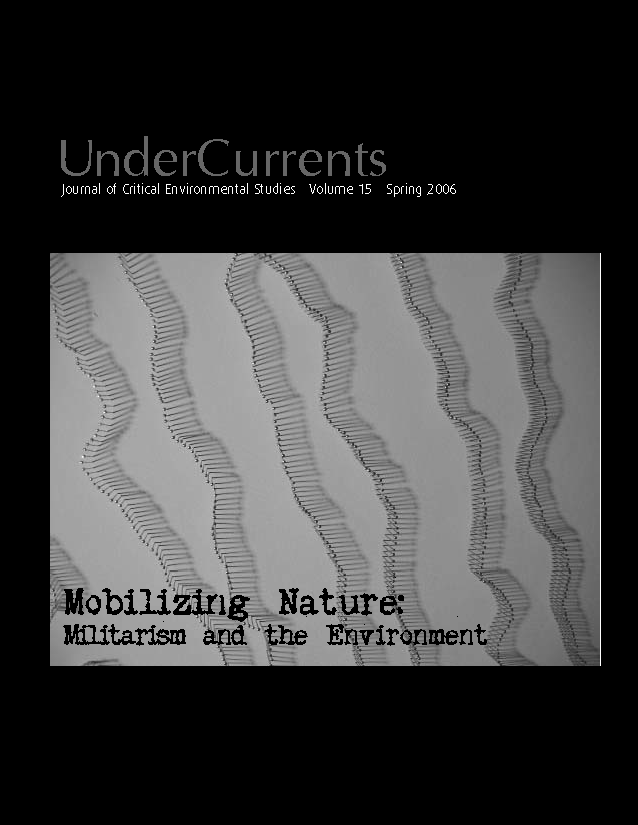Operationalizing the State
Notes on Military Responses to Environmental Disasters
DOI:
https://doi.org/10.25071/2292-4736/40377Abstract
Over the past decade, Canadians have seen our armed forces increasingly deployed in response to environmental disasters. In 1996, the Saguenay River in eastern Quebec flooded, destroying homes in the region and bursting hydroelectric dams. In 1996 the Red River overflowed its banks, flooding large areas of central Manitoba; the largest Canadian military force deployed since the Korean War (8400 personnel) was sent in to contain the flood and deliver emergency supplies under Operation Assistance. In response to the Ice Storm in 1998, which left millions of Canadians in Quebec and eastern Ontario without power, the Department of National Defence launched Operation Recuperation, which it called “the largest deployment of troops ever to serve on Canadian soil in response to a natural disaster” (www.forcesgc.ca/site/operations/recuperation_e.asp). Climate change and the growing incidence of extreme weather mean we have most likely not seen the last of this new humanitarian role for the military.
References
Brooks, Steven. Canadian Democracy: An Introduction. Don Mills: Oxford, 2003.
Dorland, Michael. “‘The Expected Tradition’: Innis, State Rationality and the Governmentalisation of Communication.” Topia #1 Spring 1997. DOI: https://doi.org/10.3138/topia.1.7
McBride, Stephen. Paradigm Shift: Globalization and the Canadian State. Halifax: Fernwood, 2001.
Tupper, Allan. “New Public Management and Canadian Politics.” Reinventing Canada: Politics of the 21st Century. Edited by Janine Brodie and
Linda Trimble. Toronto: Pearson Education Canada, 2003.
Virilio, Paul. Popular Defense and Ecological Struggles. Translated by Mark Polizzotti. New York: Semiotext(e), 1990.
Wilson, Alexander. The Culture of Nature: North American Landscape from Disney to the Exxon Valdez. Toronto: Between the Lines, 1991.
Published
How to Cite
Issue
Section
License
Copyright (c) 2006 David ToughCreators retain copyright for all writings and artwork published in UnderCurrents. New material published as of Volume 21 (2022) is available under a Creative Commons Attribution 4.0 International License (CC-BY 4.0).


